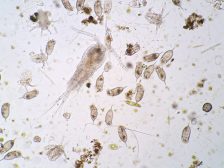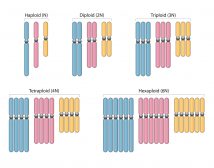Definition
noun, plural: microsatellites
(molecular biology) A tandem repeat ranging in length from 1 to 6 base pairs, repeated typically five to fifty times
Supplement
Tandem repeats are repeated nucleotide sequences in which the copies lie adjacent to each other. It may be repetition(s) of one or more nucleotides. For example, CG CG CG CG CG is a tandem repeat wherein the sequence CG is repeated five times. Examples of tandem repeats are satellite DNA, microsatellite, and minisatellite.
Microsatellite repeats are tandem arrays of repetitive DNA sequences. They are similar to minisatellites in being a stretch of DNA consisting of tandem repeats. However, microsatellites are shorter than minisatellites. The typical length of a microsatellite is about one to six base pairs, repeated about five to fifty times. It can occur in the arms of certain chromosomes. The dinucleotide repeat of guanine and thymine, (GT)n, is the most common of these dispersed repeats.
Using PCR primers to the unique sequences upstream and downstream of a microsatellite their location and polymorphism can be determined and the technique is extensively used in investigating genetic associations with disease.
Together with the minisatellites (which are relatively longer tandem repeats), the microsatellites make up the so-called variable number of tandem repeats (VNTR).
Also called:
- simple sequence repeat (SSR)
- short tandem repeat (STR)
See also:







